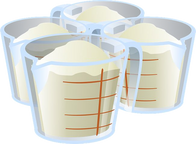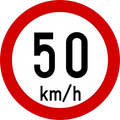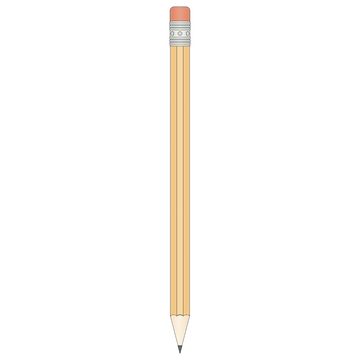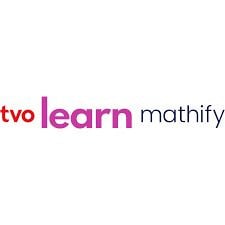Math @ Home
reason
represent
select tools & strategies
connect
problem solve
reflect
communicate
Table of Contents
Click the buttons below to access the corresponding resource.

Math @ Home
reason
represent
select tools & strategies
connect
problem solve
reflect
communicate
Positive Math Mindset
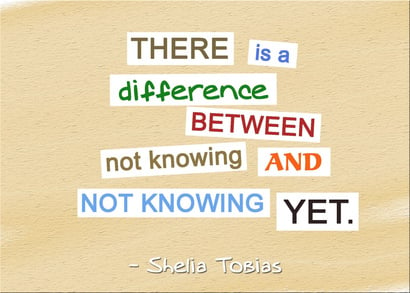
Students’ success in mathematics is affected by their
thinking about and attitude towards math. The goal of
math isn’t just to get the ‘right’ answer, it’s also knowing
what to do when you don’t know the answer, or when something
is challenging. Students need to know that EVERYONE can be successful in math, and that mistakes in math are inevitable and valuable - they are how we learn!
One of the goals of the Ontario Math Curriculum is to develop students’ confidence and a positive mindset in math. Students are more successful when they persevere, have the ability to cope with challenges, and appreciate the value of positive, productive struggle and practice.
Questions to Support Thinking
What can you do to keep going when something is challenging?
Resource Spotlight
Dr. Jo Boaler, professor of Mathematics Education at Stanford University, offers the following advice to parents/guardians:
- Encourage children to play math games and puzzles.
- Always be positive and encouraging.
- Don’t focus on ‘speed’; This can cause math anxiety.
- Don’t share with children that you were ‘bad’ at math or disliked it.
- Encourage number sense - Look for and talk about numbers in the world around us.
- Encourage a ‘growth mindset’ - “Let students know that they have unlimited maths potential and that being good at maths is all about working hard.”
A variety of tasks, explorations, and videos are available on her youcubed at Home page for children to explore at home:
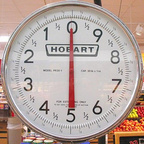

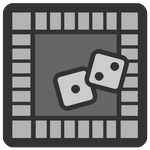
Family Math Activities
As a parent, you can support your child’s learning by making math a regular part of your day-to-day life at home - talk with your child about their math school work, show an interest in what they are learning in class, and help make learning fun by finding real world applications. Some suggestions include:
- Math Games - Math puzzles, or card and board games can bring math to life. They also require trial and error thinking, enhance numeracy and logical thinking, and promote discussion.
- Math in Digital Games – If your child enjoys using technology, introduce them to fun and educational online games and activities.
- Math at the Grocery Store – Talk to your child about how to weigh items on a scale or how to estimate the total bill as you fill your cart.
- Math with Money – Create a budget together or save to make a special purchase to help your child manage money. You could go shopping together and ask your child to estimate the amount of a purchase, calculate tax, and check their change.
- Math in the Kitchen – Bake, cook and prepare food with your child. There are many great math opportunities in the kitchen, such as measuring ingredients.
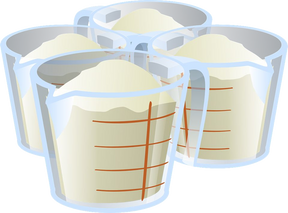
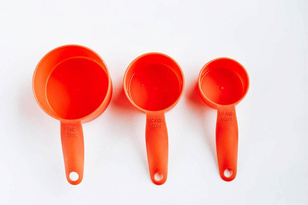
Adapted from: www.ontario.ca/page/support-your-childs-math-learning


Math @ Home
reason
represent
select tools & strategies
connect
problem solve
reflect
communicate


Mental Math
‘Mental math’ refers to doing calculations involving addition, subtraction, multiplication and division in your mind. By developing a strong understanding of numbers, students will be able to perform math calculations with ease. In addition to knowing their math facts, other mental math strategies may include rounding, estimating, making ‘friendly’ numbers, decomposing numbers, and more.
These skills are foundational to other areas of math, and they help us solve everyday, real life problems.
We use mental math skills daily: when shopping, budgeting, sharing something, calculating a tip or interest, just to name a few examples.
Questions to Support Thinking
How did you solve that in your head?
Resource Spotlight
tvoLearn is an Ontario Ministry of Education website that supports families by providing curriculum-aligned learning activities and resources for students in Grades K-12. Select your child’s grade level and then Mathematics to access learning activities for all math strands (Number, Algebra, Data, Spatial Sense, and Financial Literacy).
Check out this sample Grade 4 learning activity on multiplication and division facts, which can help support the development of mental math strategies.
For all learning activities and additional
learning resources, go to

Family Math Activities
,
Depending on your child’s grade-level and readiness, they may be learning to count, add, subtract multiply, and/or divide. They may be working on doing calculations with whole numbers, decimals, fractions, integers, and/or percentages.
Here are some activities to help your child further develop their mental math skills:
- Ask your child questions to help solve everyday problems, such as:
- “We need six tomatoes to make our sauce for dinner and we only have three. How many more do we need to buy?”
- “Would you rather have a box of chocolates with 2 rows of 8, or a box with 3 rows of 5? Why?”
- “Would you rather order two pizzas for $9.99 each, or two pizzas for $11.99 with a 20% off coupon? Why?”
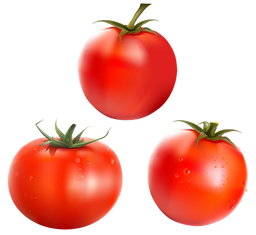


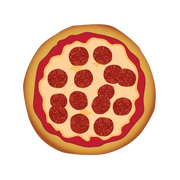



Math @ Home
reason
represent
select tools & strategies
connect
problem solve
reflect
communicate
Estimation
Estimation is the skill of determining a reasonable or approximate value or amount.
It is an important skill because it helps us in both solving problems and determining if our answers are reasonable.
We use estimation in many aspects of our daily lives. Some examples include:
- shopping in a grocery store and trying to stay within budget;
- roughly calculating the amount of tax;
- preparing food and determining the amount of ingredients needed;
- budgeting our time throughout the day.
Questions to Support Thinking
Is your answer reasonable? How do you know?
Resource Spotlight
Explore the Ontario Elementary Curriculum and see what your child is learning on the Ontario Ministry of Education's parent page. This page also includes links to resources that can help support learning at home, including tvoLearn. Find the Ontario Elementary Curriculum parent page at www.dcp.edu.gov.on.ca/en/parents.

Have you ever wondered why your child is learning a particular concept or skill? The Expectations by strand page for each grade includes a “Why is my child learning this?”
From the math curriculum home page, select Grades and then the grade you want to look at. Then select Expectations by strand to find this information.
Family Math Activities
,
Ask your child to gather a collection of small items and put them in a jar, such as buttons, beads, shells, popcorn, candies, and so on.
Together discuss:
- About how many items might be in the jar?
- How they came up with their estimate? - Younger children may try to count, or just ‘guess’; older children may use a strategy like counting how many in a small section or row, and then use that to judge how many are in the entire jar.
- The actual number of items compared to their estimate.
Try making it a family contest where every family member comes up with an estimate to see who is closest!
Families can engage children in estimating when doing things like counting, shopping, cooking, scheduling, and budgeting.

About how many candies might be in the jar?
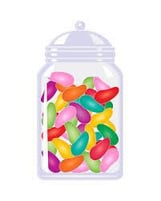


Math @ Home
reason
represent
select tools & strategies
connect
problem solve
reflect
communicate
l x w
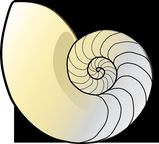
Algebra
Algebra is foundational to mathematical thinking. It helps us to generalize patterns or relationships we see in our everyday world. Learning about algebra involves recognizing patterns, finding missing information, and analyzing how things change. Students use math models to analyze problems and real life situations.
Algebra is important because it helps students understand how numbers work. It teaches them to think logically and systematically, and solve problems.
We use algebra all the time in everyday life, for example, when you increase a recipe to double the servings, or use formulas to calculate area,
perimeter, or the time it will take to get somewhere. Even playing sports makes use of algebra! Algebra also has applications in most career fields including arts, architecture, culinary arts, business, science, engineering
and computer programming.
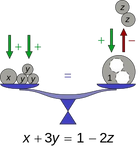
Questions to Support Thinking
What patterns did you notice?
What steps did you take to solve the problem?
Resource Spotlight

The Math Learning Centre’s Math at Home page offers a variety of engaging activities and games that can be used by children and families to support math learning at home. These activities and games are designed to get children thinking deeply about math. Activities are organized by grade level and include tasks for many key mathematical concepts.
To further support children’s development of math understanding, The Math Learning Centre also offers digital math tools for students to explore math using visual models. Tools include Geoboards, Fractions Strips, Pattern Shapes, Math Vocabulary Cards, as well as a Whiteboard App. These Math Apps can be accessed at: https://www.mathlearningcenter.org/apps
,




Family Math Activities
Here are some activities to help your child further develop their understanding of algebra:
- Go on a pattern hunt. Help your child understand that patterns are something that repeats by looking for patterns together in your home or neighbourhood, such as the stripes on a shirt, a spider web, a snowflake, or leaves.
- Create a pattern together using blocks, small toys, or a sound pattern with claps and snaps. Ask your child what part repeats, and what comes next.
- Older children can play “Guess My Rule”:
- Draw a table with two columns, the first labelled “IN” and the second labelled “OUT”
- Decide on a rule related to addition, subtraction, multiplication or division, such as add 4 or multiply by 3. Then, choose a number to write in the “IN” column, apply the rule and put the result in the “OUT” column. Example: If your rule is subtract 5, you might write: 20🠆15, 15🠆10. Continue writing examples until your child guesses your rule.
- Take turns with your child, guessing each other’s IN/OUT rules.

Is the rule -5?
IN
OUT
20 15 10
15 10 5


Math @ Home
reason
represent
select tools & strategies
connect
problem solve
reflect
communicate
Coding
Coding is a language that uses a set of instructions to communicate with computers. There are different coding languages such as Scratch and Python.
Coding is an important skill to learn for many reasons, including:
- It helps kids develop thinking, reasoning, and communication skills;
- It is used in everyday life to represent and solve problems;
- There is an increased demand for people with computer science, coding, and digital skills;
- It empowers kids to create, innovate, and solve real-world
problems.
So many of the things we use in modern day life, such as websites, video games, apps, machines, cell phones, even a coffee maker, rely on coding.

Questions to Support Thinking

How are some different career fields impacted by coding and digital technology?
Resource Spotlight
Your child can explore coding at home!
Code.org offers engaging, easy to follow tutorials and videos to explore the world of code, as well as ‘unplugged’ activities. Encourage your child to try the “Hour of Code” tutorials, or one of the introductory self-paced courses. www.code.org/athome
ScratchJr is a FREE app that can be downloaded on iPads or tablets. “With ScratchJr, young children (ages 5-7) can program their own interactive stories and games.” See www.scratchjr.org for more information and links to download.
Scratch is a FREE coding site designed for children aged 8-16. Using the Scratch language, children can create projects such as stories, games, and animation. Go to www.scratch.mit.edu
,




Family Math Activities
Here are some activities to help build coding skills:
- Try an ‘unplugged’ activity (no device needed!):
- Have your child act out a step-by-step sequence of instructions, such as walking to the kitchen, or walking to make a shape such as a square. For example, “walk 8 steps, turn left, walk 10 steps, turn right, open the fridge, take a snack.”
- You can then ask what they noticed about your instructions.
- Take turns and have them give you instructions.
In school, children will be using coding to explore and represent mathematical concepts. Home is a great place to practice the skills of coding using sites like code.org, Scratch and ScratchJr.

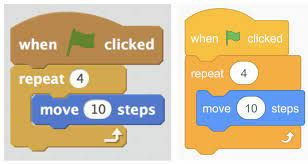


Math @ Home
reason
represent
select tools & strategies
connect
problem solve
reflect
communicate
Financial Literacy
Financial Literacy means having the skills and knowledge to manage and make decisions about money.
Using money wisely is an important skill because students need to understand how money works, how it is used in society, and how to make informed decisions as consumers.
We deal with money matters in the real world daily; However, financial literacy is more than just knowing about and using money. It begins with basic money concepts and extends to the understanding of financial well-being, including earning, saving, budgeting, investing and debt.
Questions to Support Thinking
What is a budget and why is it important to have one?
What are some different ways we can use to pay for things? When might we choose one method of payment
over another?
Resource Spotlight

Are you looking for a way to make math at home more engaging? Knowledgehook is a website that makes math practice fun! And it includes questions aligned to Financial Literacy curriculum expectations.
Students who already have an account through their school can
simply enter their Class Code to login. Connect with your child’s teacher for more information.
For students who do not already have an account, click on “Create
Your Account”, then “Register as a student”. Then, they can follow the prompts to create an account.
Family Math Activities
Here are some activities that help your child to build Financial Literacy:
- Play ‘shop’ or ‘restaurant’ with your child. You can use real or play money, and can help your child match the bills and/or coins with the name and value. Older children can practice making change. Ask your child:
- What is something you ‘need’ and something you ‘want’?
- What is the difference between a ‘need’ and a ‘want’?
- Talk about money when out shopping with your kids. Ask them questions like: Is this item a need or want? Is it a good deal? Are there less expensive options?
- READ together! Marvel Comics has released two online educational comics to teach kids about money skills: Guardians of the Galaxy and Avengers. Check them out at: www.practicalmoneyskills.ca/resources/comics


Have fun learning about money and finances with activities and games for all ages at: https://www.bankofcanadamuseum.ca/learn/activities/


Math @ Home
reason
represent
select tools & strategies
connect
problem solve
reflect
communicate
Data

“Data” refers to information, facts, and statistics.
Students learning data literacy learn to read, collect,
organize, analyze and communicate data in various
ways including graphs. They learn to use data to
make convincing arguments, informed decisions and predictions.
Data literacy is very important because it helps us to answer questions about the world around us. We use data to help us identify trends, make predictions, and solve problems.
Data is very relevant to real life and examples are all around us. For instance, weather forecasts, opinion polls, politics, fluctuating costs, and sales trends.
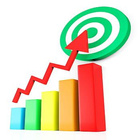
Questions to Support Thinking
What is an example of how data can be used to answer questions and make predictions?
Resource Spotlight
tvoMathify can help support your child across all strands of math - including Data! Mathify offers FREE 1:1 math tutoring for grades
4-12 with Ontario certified teachers who offer additional support for building understanding of math concepts.
Boost your child’s math understanding and confidence with a “personalized math coach” that works with your child’s schedule, available Monday-Friday 9 a.m.-9 p.m. and Saturday-Sunday 3 p.m.-9 p.m.
Children can register as a student using their OEN number (found on their report card or from their teacher). Get more information on tvo Mathify’s Parent page.
Family Math Activities
Here are some activities that help your child further develop their understanding of data:
- Have young children sort toys, socks or other small items. They may choose to group them based on colour, type of item or another way. Ask them how they sorted the items and why they chose to sort them that way.
- Ask your child what questions they have about things their friends or family members like, such as what is your favourite food or activity. Encourage them to take a ‘survey’ to find out. Ask them how they will keep track of the answers.
- One of the biggest applications of data is targeted advertising and advertisers are willing to pay a lot of money for access to our personal data. Let children know that information about their online behaviours is constantly being collected, everything from their likes, things they click on, online surveys they do, favourite websites, and so on. All children can be taught the importance of protecting their personal information when online.

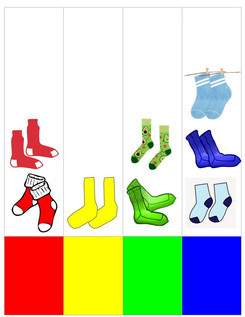



Math @ Home
reason
represent
select tools & strategies
connect
problem solve
reflect
communicate
Fractions
A fraction represents equal parts of a whole unit, a number, or a group of items. Using models and visual representations can help children see that a fraction is really a division problem. Even young children have a sense of what is ‘fair’ when sharing something. This can help them see that fractions represent equal parts or groups.
Understanding fractions is key to your child’s understanding of numbers and is a building block for other areas of math.
Helping your child see fractions in daily life will make them more meaningful. Examples include:
- time - 30 minutes is half of an hour
- money - 25¢ is a ‘quarter’ of a dollar
- cooking - measuring 1 ¼ cups of an ingredient
- school - getting 9/10 on an assignment
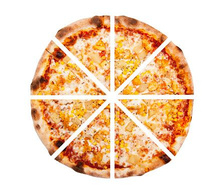
Questions to Support Thinking
Would you rather have ½ of your favourite food or ¼? Why?
Resource Spotlight

“Bring Math to Life” with the digital math tools offered on Brainingcamp. Math tools, or manipulatives, help students to represent real life situations, solve mathematical problems and explore abstract concepts.
The tools found on this site include: Fraction Circles,
Fraction Tiles, Pattern Blocks, Clocks, Number Lines, Base
Ten Blocks, Algebra Tiles and more!
Watch a short video about Brainingcamp here: bit.ly/dpbrainingcamp
To access Brainingcamp go to: www.brainingcamp.com
- Click “Sign In”
- Username: Ask your child’s teacher
- Password: Ask your child’s teacher
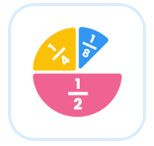

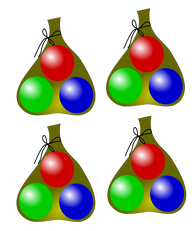
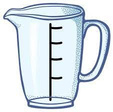
Family Math Activities
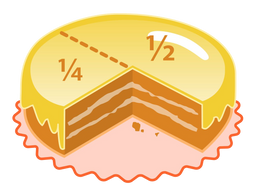
Here are some activities that help your child further devlop their understanding of fractions:
- Young children can play with cups or containers of different sizes. You can ask questions like, how many smaller cups will fill the whole cup?
- Let your child help you when cooking or baking using measuring cups and spoons.
- Discuss with your child how to divide a food item into equal pieces or portions, such as a pie, cake, pizza, chocolate bar, group of cookies, etc. Older children may be asked to to cut or divide whole items into equal pieces.
- Ask your child to gather a collection of items they like (such as marbles, toys, rocks, etc.) and to divide them into equal groups.
- Ask what fraction are you actually saving if you buy two items that are ‘Buy One Get One Half Off’?

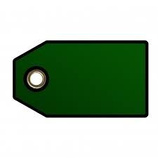
Big sale!
BOGO ½ off


Math @ Home
reason
represent
select tools & strategies
connect
problem solve
reflect
communicate
Geometry
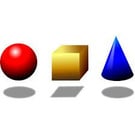
“Geometry” is the area of math that deals with shapes,
figures, and the properties that define them. As students learn about geometry and spatial sense, they develop the ability to name and describe shapes, sizes, positions, directions, and movements. Everything around us has a shape, size, and takes up space. Becoming familiar with shapes in their environment, including ‘irregular’ shapes, will help students grasp the principles of geometry in later grades when they describe and classify shapes based on geometric properties.
Geometry is important in many aspects of life, such as
building and construction design, as well as in creating
and understanding art. Interior design and graphic
design also rely heavily on principles of geometry and spatial sense.
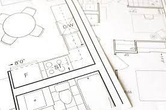
Questions to Support Thinking

What is similar about these shapes?
What is different?
Resource Spotlight

“TVOKids gets kids ready for school, life, and to take on the world through the power of learning.
Developed for every young learner and covering virtually all Ontario Curriculum areas for Grades JK-5, TVO-produced children’s content is built in collaboration with educational consultants and classroom-tested to ensure specific educational objectives are met.”
Whether watching a video series such as Odd Squad, Homework Zone: Mathematics, or playing games like Tumbletown Mathletics, TVOKids lets kids have fun while learning about
math!



Family Math Activities

Here are some activities that help your child further devlop their understanding of geometry:
- Help your child see that shapes are everywhere by going on a Shape Hunt. Look for shapes around your home, outside in the environment and in your community. You can look for flat, 2-dimensional shapes such as windows, tiles, and traffic signs, as well
- as 3-dimensional shapes like oranges, boxes, balls, and buildings. Ask them to name and describe the shapes they see. Ask them questions like, “how do you know that’s a square?”
- Have your child draw a picture using shapes, or build something using blocks or recycled materials such as boxes and toilet paper rolls.
- Use 20 toothpicks to make 3 shapes. None of the shapes can use the same number of toothpicks. Have your child name the shapes and share why they decided to make those shapes.


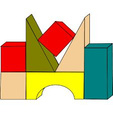


Math @ Home
reason
represent
select tools & strategies
connect
problem solve
reflect
communicate
Measurement

Measurement is all about comparison. When we measure
something, we are usually trying to determine something
about its size, distance, mass, capacity, time, or the amount of space it takes up. We do this by comparing what we are measuring to a ‘unit’ of measure. In early grades, students begin exploring measurement using non-standard units. For example, how many paper clips long something is, or how many square tiles will cover something. They then move on to standard units of measure (e.g. metres, grams, kilometres, litres, minutes, etc.).
Measurement is an important part our everyday lives.
Whether we’re cooking, telling time, driving, or buying
new shoes, we’re using measurement. Even computers and cell phones rely on measurement to operate.
Questions to Support Thinking


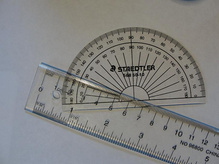
How did you determine…
How much? How long? How wide? How many?
How high? How heavy? How far? How big?
Resource Spotlight

Would You Rather Math is a website that has a collection of pictures and prompts that ask children to choose between ‘this’ or ‘that’. No matter which option they choose, the focus is on justifying their choice and using math to explain their reasoning. There are lots of fun paths to choose from to stimulate great math based conversations!
One example is: Would you rather…
Have a pitcher with 2 litres of lemonade, OR 4 juice boxes with 250 mL of lemonade in each box? WHY?
Go to www.wouldyourathermath.com and click on the appropriate grade level for your child.

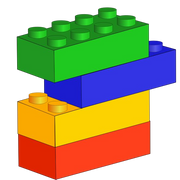
Family Math Activities

Here are some activities that help your child further devlop their understanding of measurement:
- Let young children play with containers of different sizes that they can fill with water. How many small containers of water does it take to fill up the big container?
- You can make measuring objects fun by having your child choose different items to measure with. Instead of using a ruler, they might measure how long something is using crayons, or how high something is using blocks. Ask them how they might measure how tall they are.
- Scavenger Hunt - Ask your child how many items they can find around the home that are about as long as their arm, or thinner than a pencil. Can they find 3 things that weigh less than their shoe?
- Cook together! Let your child fill measuring cups and spoons, or add a ‘pinch’ of something.
- You might ask older children: How much time is there between dinner and bedtime? How long will it take to get to someone’s house if the distance to get there is 150 km and we’re driving 50 km/hour?

